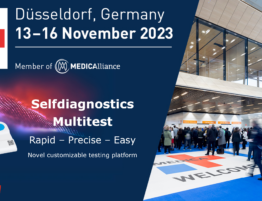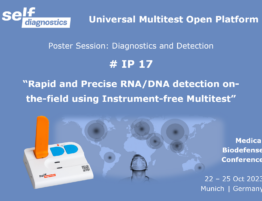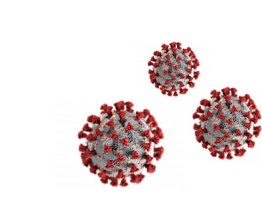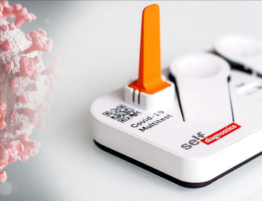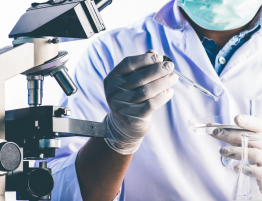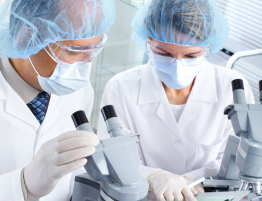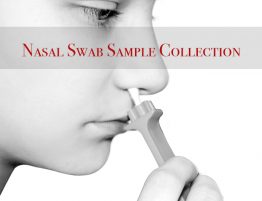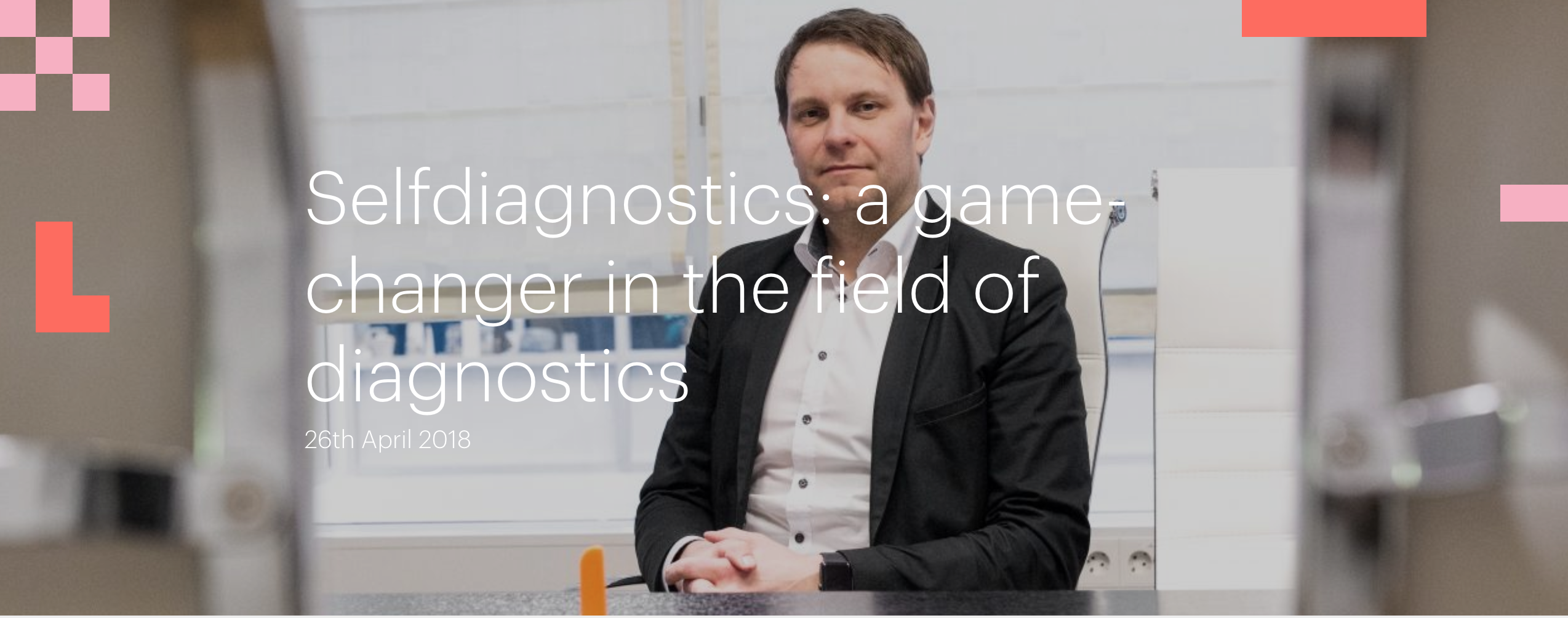
The Estonian company Selfdiagnostics brings laboratory-grade precision home medical testing to ordinary users and offers the world’s smallest application of PCR technology. This unique product paves the way for bigger changes in medicine in regard to patients taking the first steps toward diagnosing illnesses.
Founded in 2008, the company originally looked to market a patient-side diagnostic concept and solution to allow for an additional capability for diagnosing patients at home with the goal of starting treatment as early as possible. “Health care issues are a salient topic, and services in the field are certainly not as available to people as they would like. People are also used to making increasingly more decisions about their health themselves, and they are quite well-informed. Today people tend to try to take the initiative themselves as the first step toward understanding what the problem is and how it might be treated. Democracy in healthcare and patient autonomy will be the next big drivers of developments in the healthcare sector and Selfdiagnostics is committed to supporting these values,” says CEO and co-founder Marko Lehes.
“National systems or state-funded health care services are one package, but people are also increasingly willing to pay for their healthcare themselves. This is what led us to invest into a diagnostics platform that would help people take the first step – identify their ailment, and, armed with that knowledge, seek out a physician to start treatment as soon as possible. We launched the concept in 2008 and in November 2017, we unveiled the first ultra-accurate diagnostics system for home users at one of the world’s biggest medical equipment fairs, Medica Düsseldorf,“ says Lehes.
Laboratory standards for home users
Selfdiagnostics gives home users access to a PCR (polymerase chain reaction) solution that is the gold standard for diagnosis of communicable diseases. The Selfdiagnostics product is comparable to laboratory testing in terms of accuracy and sensitivity but without the need to visit a lab or use special instruments.
“It’s a unique product – today PCR systems come in the form of big boxes in labs, but our product is a pocket version. It’s the world’s smallest PCR. We are confident the product will transform medicine by giving people the opportunity to take the first steps in diagnosis. They then go to the doctor with the result and the doctor confirms the diagnosis and determines the treatment,“ Lehes said.
The STD Multitest, introduced at last year’s Medica, helps diagnose sexually transmitted diseases: a drop of urine is placed in the device, the press of a button launches a reaction and the result appears on the readout. This specific test detects two of the most common STDs: chlamydia and gonorrhoea. The platform itself is quite broad-based as PCR determines the DNA of the disease agent. Today, work is underway on future systems for diagnosing illnesses such as flu and tuberculosis.
”We have screened for about 20-30 pathogens, and today we are working with about 10 pathogens. There are mainly three selection criteria: first, the market size or scope of the problem; second, the technical product concept, meaning that we look at whether the solution can be realized at a reasonable price; and third, the competitive advantage. The flu and TB are complicated goals but we feel they are technologically feasible and our product has a competitive edge,” says Lehes.
There are two types of potential buyers of Selfdiagnostics: end consumers and professionals. “Our target group is the ‘person on the street’ who want to check their health as well as specialists who do not have a central laboratory service, such as family doctors,“ explains Lehes.
“We talk to potential customers or consumers as early as the product development phase. Proceeding from market information has been an important criterion for product development as this is a chance to achieve a competitive advantage,” he says. “As of today, we have entered into preliminary agreements for the sale of half a million devices all over the world,“ adds Lehes.
Lehes explains that the competitive advantages are different from one country to the next. “For example, Nigeria doesn’t have a way of using molecular diagnostic equipment for a precise diagnosis; doctors make decisions based on old-school diagnostic tests. Furthermore, they do not have ways or means to develop centralized laboratory testing. Our product is more accurate and faster, and it’s also really simple. On the other hand, laboratory services are readily available in Europe. Our product’s advantage in Europe is the fact that the test can be administered at home, in a private environment. People postpone seeing a doctor because they don’t have time but mainly because it’s a sensitive topic and they’re scared of going to the doctor. Otherwise, diagnosis and treatment would be put off, but we offer a private way to diagnose an illness.”
There simply isn’t another such comprehensive test on the market.
“If we’re talking specifically about the STD Multitest, it’s the only device that can diagnose a disease from urine. It’s non-invasive and can be used by both men and women. There simply isn’t another such comprehensive test on the market. Today, testing for chlamydia and gonorrhoea is possible, and trichomoniasis will be offered in the next version – these are more common diseases,” he adds.
Eyes on the prize
“We started development in Estonia, and in 2013, we started a company in Germany. The German team and laboratories focus on developing a device for the end consumer, while business development and sales are based in Estonia,” says Lehes.
In parallel to product development, the company is also pursuing sales operations actively: “We sell analogous products made by third-party manufacturers – rapid tests, blood pressure instruments, inhalers. We are active in the home medicine market in Estonia, Germany and the UK. In the context of product development, we’re interested in Europe, and we’re in talks with US distributors to validate and market the product, as well as in Asia through South Korean partners,” he says.
Selfdiagnostics also has expansion plans, and negotiations are underway as to whether to set up manufacturing operations in Europe or Korea. “Expansion is the only way to go, as the market is ultimately international. Estonia is a good location for running a business, for doing business – but the expertise, market and resources are elsewhere,” says Lehes. In 2020, we plan to enter the European and Asian market, then enter the US market. In 2025, we plan to get to the stage of an IPO.
“It might come as a surprise to many, but I would say that our overall plan is watertight. Yes, we’ve underestimated many risks, but the same is true of the opportunities that come with the sector. Our overall concept is spot-on and this has ensured our success. Today we have invested around 12 million euros, and we need the same amount to enjoy success on the market. That amount is above average in the world of start-ups. Concerted development and generating income within the company is what has got us here, not living hand to mouth off of donors,” says Lehes.
Author: Eli Lilles
Photo: Renee Altrov


